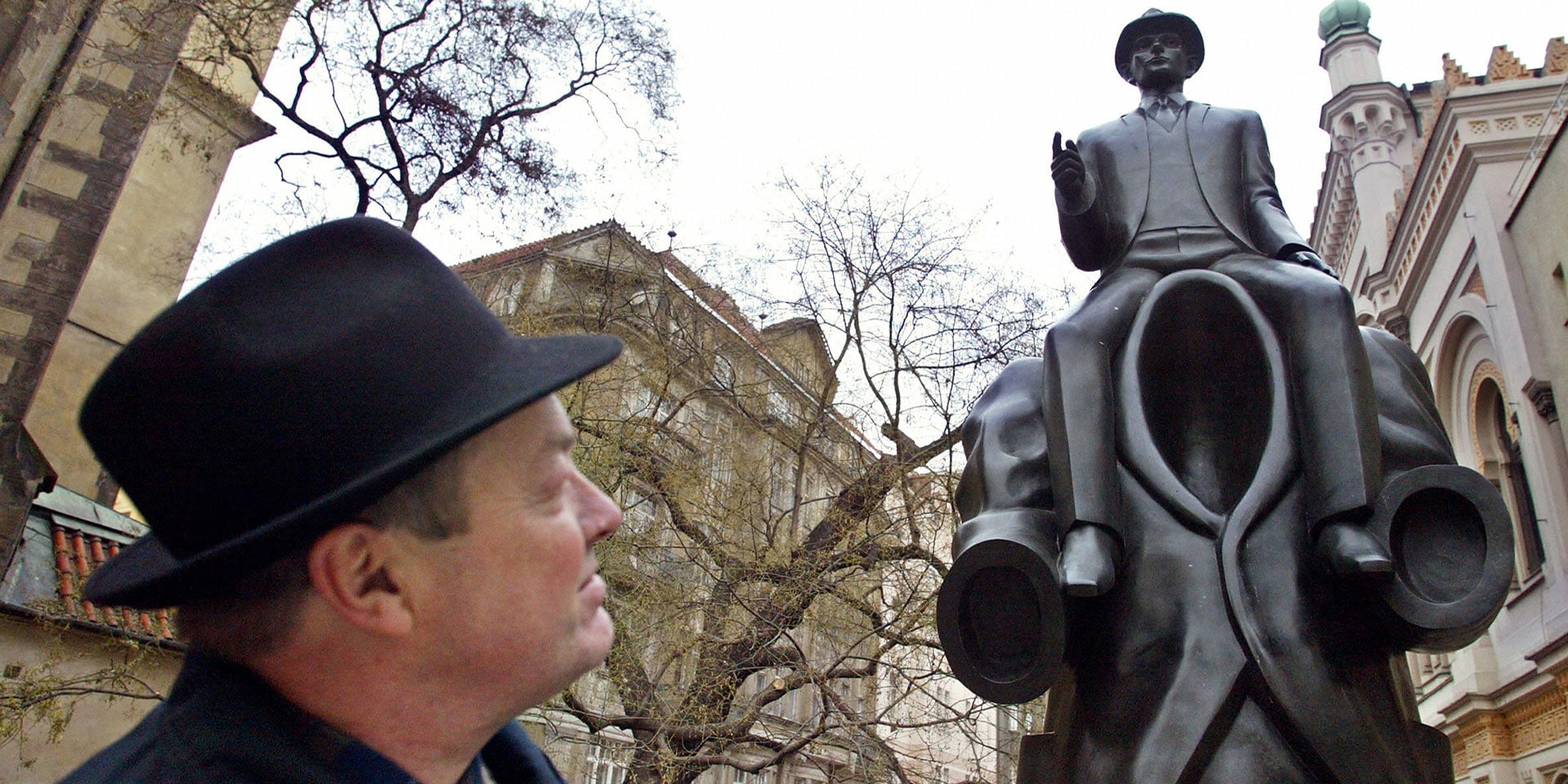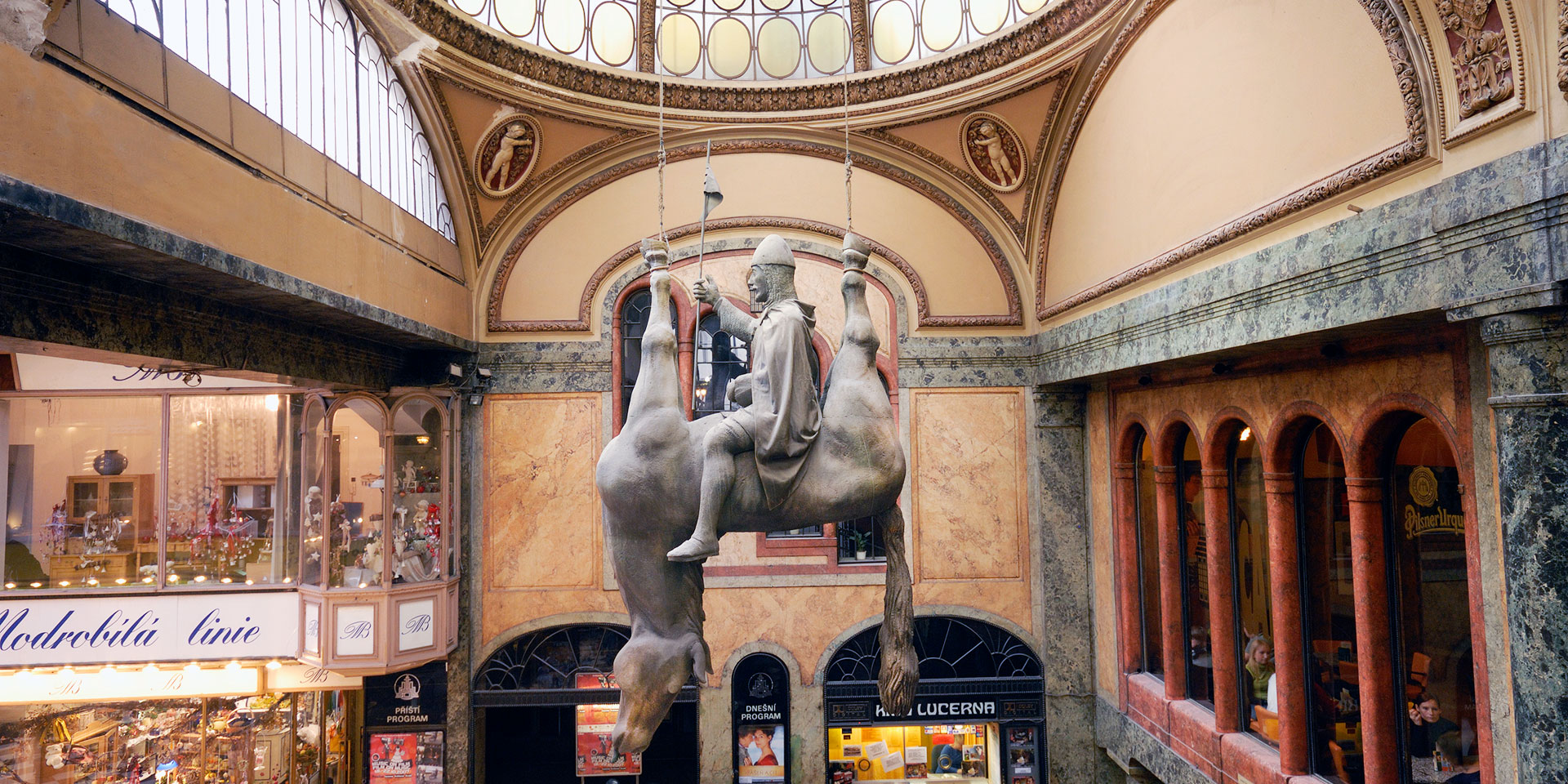In its 12 or so centuries, the city of Prague has been inhabited by its fair share of artistic geniuses. Writer Milan Kundera, decorative artist Alfons Mucha and film director Miloš Forman, among many others, have lived in the City of a Hundred Spires. Even Mozart loved spending time in the city, feeling particularly inspired to create when he was there. Prague-born Franz Kafka famously said, “Prague won’t let go. The little mother has claws.”
There are many ways to interpret this, both positive and negative (Kafka’s sentiments were probably the latter), but when it comes to the city’s recent public street art, it’s not hard to feel gripped by the city that envelopes and inspires that art.
The artistic allure of Prague today is not just the gothic and baroque architecture, the Medieval and Renaissance-era statues in the center of cobbled squares, or even the art deco interiors of high-ceilinged fin-de-siècle cafés.
Since the turn of the millennium, new art has been popping up on the streets of Prague. And taking a self-guided tour of the city’s public art leads the visitor to nooks and crevices of this medieval metropolis into which one would not normally wander, through passageways and untrammeled squares and down narrow cobblestoned alleyways.
In this case, when visiting each work of public art, the destination is the goal, but the journey isn’t so bad, either.
Begin with an Icon’s Art: Černy
Start the tour at the 700-foot-tall Žižkov TV Tower, located outside of the center of the city (take the subway to Jižiho z Podebrad station). This futuristic-looking tower, dominating the city’s skyline since late 1980s, has been an object of hatred among locals. (Rumors have long swirled that the Communist government built it to block radio signals from the West.)
But then, in 2000, David Černy, perhaps the most famous living Czech artist, affixed VW bus–sized, dark-hued crawling babies to the shaft of the tower. Somehow, after Černy’s modification, locals started tolerate the tower a bit more. It humanized it. It made it much more interesting to look at.
When it comes to modern art in Prague, it’s impossible to avoid Černy. His not-particularly-subtle, often-sarcastic work is sprinkled throughout the city, much of it a comment on Czech history and culture.
In the Lucerna Palace, located on the corner of Wenceslas Square and Vodičkova Street, the main (public) hall is dominated by a massive hanging statue of an equestrian-mounted King Wenceslas, the patron saint of Bohemia.
The statue is a reference to one that sits atop Wenceslas Square, often a rallying point for Czechs — particularly in 1989 when they successfully protested away the Communist government that had been in control for 41 years. Only, Černy’s version is slightly different: Here the “good king” of Christmas carol fame is sitting on an upside-down horse’s belly, ignorant of the fact that the animal he’s riding is actually dead.
There are many interpretations of the piece, and Černy said it was inspired by the post-Communist hangover the country was experiencing. “It was based on a quote by [late playwright, then president] Vaclav Havel, when he said the country was in a ‘bad mood,’” Černye said, “a disappointment after the 10 years of the so-called end of Communism.”
From here, walk down Vodičkova Street, make a right turn on Palackeho Street, then a quick right again on Jungmannova and, finally, left on Charvatova Street. Here, tucked in between a Tesco department store and a city government building, you’ll find Černy’s latest public work: a 36-foot-high bust of Franz Kafka made of 42 different chrome plates that rotate.
Černy said he loves the irony that sometimes Prague citizens may leave the city government building frustrated and disillusioned by the experience and then suddenly come face to face with Kafka, reminding them of the Kafkaesque experience of dealing with government bureaucrats.
Beyond Černy

Speaking of the great early-20th-century writer of “The Trial,” “The Castle” and “The Metamorphosis,” on the back streets of Old Town, at the intersection of Dušni and Vezenska Streets, is artist Jaroslav Róna‘s captivating bronze monument to Kafka.
The 12-foot-tall statue depicts Kafka (or someone who looks like him) riding on the shoulders of an upright empty suit. The image is based on a scene from a Kafka short story called “Description of a Struggle,” in which the main character rides around Prague on the shoulders of a mysterious headless human.
The monument, commissioned by the Franz Kafka Society, is a larger version of the 12-inch statuette given to writers who are awarded the annual Kafka Prize for writing and literature.
Across Old Town, past the National Theater at the intersection of Myslikova and Odboru Streets, artist Michal Trpák‘s sculptures of hanging people adorn the area. Two people, a man and a woman, holding umbrellas and hanging about 20 feet up, are fun and intriguing and evoke a similar David Černy work of a man hanging from wooden plank atop an Old Town street.
End this aesthetically pleasing tour of Prague’s contemporary public art by heading downriver (just a block away from the Trpák’s hanging sculptures). Along the Vltava River at Jiraskuv Bridge is one of the city’s most striking examples of contemporary art: the “Dancing House,” as it’s called, designed by Canadian-American architect Frank Gehry (along with Croatian-Czech architect Vlado Milunić).
The building gets its name from the fact that it resembles two people dancing, the wavy glass outer layer looking similar to a woman’s dress.
But does Kafka’s statement about Prague and its claws still resonate with these artists? Černy, who lives in Prague, said that when he lived in New York City, he’d often return to his hometown. “I was flying back and forth a lot between the two cities, and most of my ideas at the time were all happening when I was in Prague.”
Claws, indeed.




